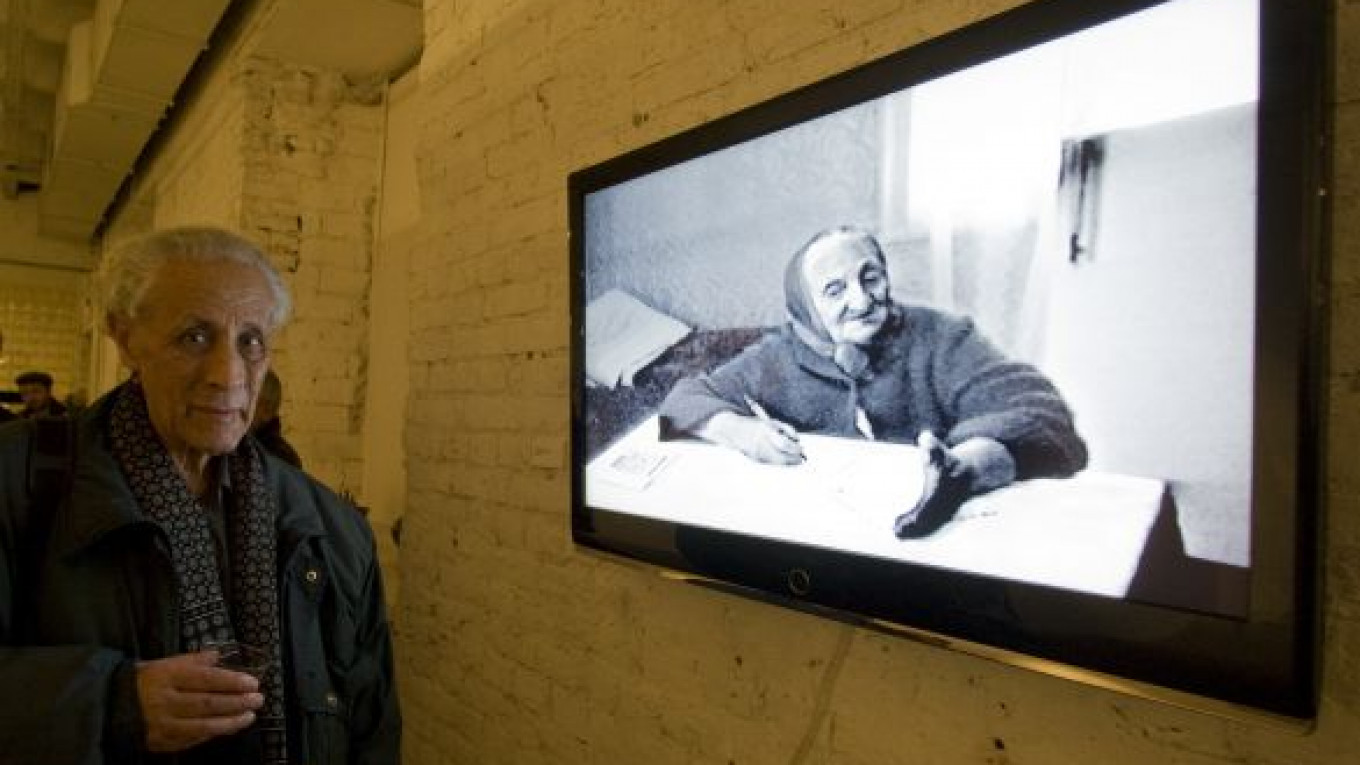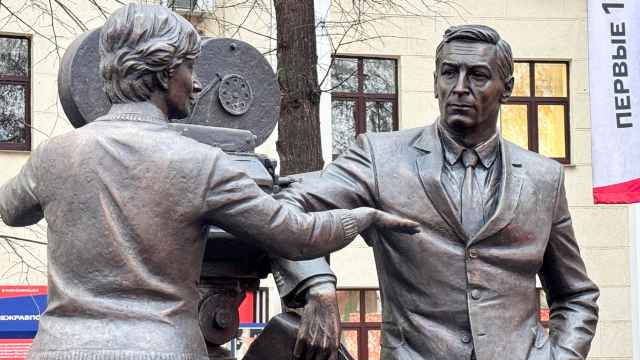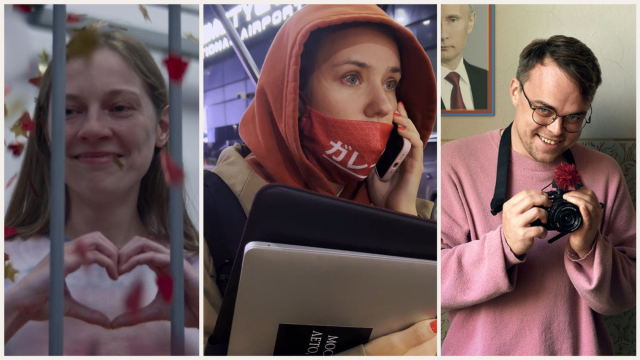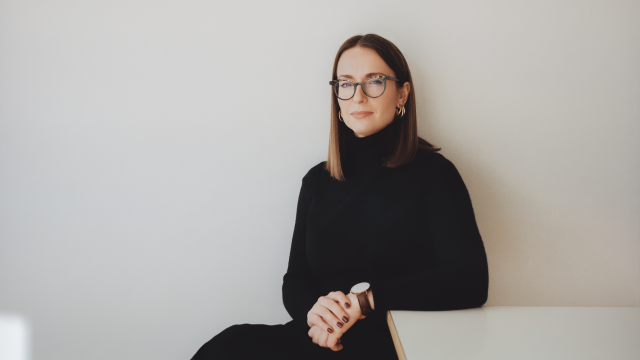Meir Axelrod’s simple drawings, on display at Winzavod’s Proun Gallery, allow visitors to see a long lost way of life, of Jews in the Russian empire at the start of the 20th century.
Combining the drawings with the photographs, material artifacts and film footage, the exhibit allows visitors to feel the sights and sounds of the shtetls, or Jewish market towns, before they were torn apart by pogroms.
Axelrod was born in 1902 in a shtetl in Maladzyechna, Belarus, which was destroyed by a pogrom in the 1910s.
As shtetl life fell apart, Axelrod moved to Moscow, where he studied at the state Higher Art and Technical Studios, or Vkhutemas.
The exhibition focuses on the sketches Axelrod produced in the 1920s, which documented the rapidly disappearing shtetls.
Axelrod’s simple pencil-and-paper drawings capture both his subjects’ exhaustion and their resilience. Individual portraits of adults and children, such as “Sullen Boy” (1924), feature gaunt figures with lowered gazes and slumping shoulders. Group drawings like “Community Bazaar in the Shtetl” (1926) balance the portraits’ desperate isolation with the small joys of community life, as groups eat, dance and do business in the bustling markets that were the heart of the shtetls.
But exhaustion and dislocation continue to haunt Axelrod’s group scenes. In “Expulsion of the Jews” (1927), officials on horses lead a huddled mass of people away from the market toward an unknown fate.
The first wave of pogroms in the Russian empire broke out in the early 1880s, when many blamed the assassination of Tsar Alexander II on a Jewish plot. Local police and tsarist authorities encouraged the popular riots that destroyed Jewish homes and businesses across Ukraine and Poland.
While scattered violence continued for decades, the onset of World War I brought unprecedented persecution. As Jews were accused of treason, communities such as Maladzyechna were forced to relocate away from the front. The Russian Civil War and the Soviet-Polish War in the early ’20s brought still more attacks.
The combined effects were devastating. Deborah Yalen, a historian of the shtetl, said official Soviet reports found post-war Jewish communities “economically and socially ravaged,” inhabited only by the very young, the sick and the elderly.
The Soviet collectivization campaign in the late ’20s “effectively ended the shtetl’s historical role as a market town,” Yalen said. Bolshevik discrimination against the bourgeoisie further deteriorated Jewish culture. Paradoxically, however, state policy in the ’20s promoting ethnic minorities helped preserve some Yiddish educational and cultural institutions.
Short documentary films playing in the gallery testify to this mixed legacy of loss and endurance. In “Times are Changing,” an old woman writes out the Hebrew alphabet she was taught as a child and never used again, smiling as her shaky hands form the letters.
Gallery director Marina Loshak said that while the exhibition “underlines the tragic aspects of the situation,” the curators also wanted viewers to appreciate the “humor” and “specific sound” of its subjects. The “modest, everyday” objects scattered throughout the gallery — including a woven basket, a record book of births and deaths, and a collection of offering pots — help viewers “emotionally connect” to the communities in the drawings.
While studying at Vkhutemas, Axelrod met leaders of the Russian avant-garde, including artist Daniel Shternberg, who encouraged his work. After persecution under Stalin’s “anti-formalism” campaign of the ’30s temporarily restricted him to illustration and theater design, Axelrod continued painting until his death in 1970.
The exhibition also features graphics by Shternberg and another avant-garde artist, Nathan Altman.
Throughout his career, Axelrod often created portraits of his family, who survived the pogroms and relocated to Minsk (with the exception of his brother, the poet Zelik, who in 1941 was shot outside Minsk by the secret police during a wave of repression of Jewish writers).
At the Proun Gallery, Axelrod’s family appears in photographs donated by his daughter Yelena, a poet, and son, artist Mikhail Yakhilevich, who live in Israel.
Although the culture on display in the exhibition often was overlooked in the Soviet Union, Loshak said “a lot has changed” since its collapse. Now, organizations such as the Jewish Congress draw public attention to the Jewish experience; popular galleries such as the Garage Center for Contemporary Culture showcase a wide variety of Jewish artists.
Loshak acknowledged that the painful expulsion Axelrod and his peers experienced a century ago served as an important “theme of their creative work.” But she said that in the end, their art was “entirely assimilated to the heart of Russian culture,” and wholly accessible to an international audience — even those who will never know the shtetl’s forgotten world.
“Meir Axelrod (1902-70): Graphics from 1921 to 1930” runs until Sunday at the Proun Gallery, located at 1 4th Syromyatnichesky Pereulok, Bldg. 6. Metro Chkalovskaya, Kurskaya. Noon to 8 p.m., closed Mon. Tel. 916-0900, 917-4646, www.winzavod.ru, www.proungallery.ru.
A Message from The Moscow Times:
Dear readers,
We are facing unprecedented challenges. Russia's Prosecutor General's Office has designated The Moscow Times as an "undesirable" organization, criminalizing our work and putting our staff at risk of prosecution. This follows our earlier unjust labeling as a "foreign agent."
These actions are direct attempts to silence independent journalism in Russia. The authorities claim our work "discredits the decisions of the Russian leadership." We see things differently: we strive to provide accurate, unbiased reporting on Russia.
We, the journalists of The Moscow Times, refuse to be silenced. But to continue our work, we need your help.
Your support, no matter how small, makes a world of difference. If you can, please support us monthly starting from just $2. It's quick to set up, and every contribution makes a significant impact.
By supporting The Moscow Times, you're defending open, independent journalism in the face of repression. Thank you for standing with us.
Remind me later.






